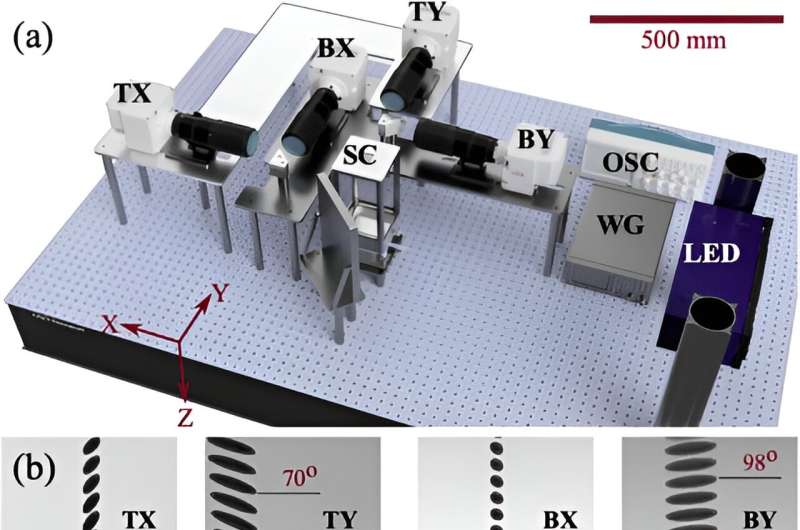This article has been reviewed according to Science X's editorial process and policies. Editors have highlighted the following attributes while ensuring the content's credibility:
fact-checked
peer-reviewed publication
trusted source
proofread
New research sheds light on how non-spherical atmospheric particles behave

The atmosphere contains many tiny solid particles. Scientists from the Max Planck Institute for Dynamics and Self-Organization (MPI-DS) and the University of Göttingen, in collaboration with the Centre National de la Recherche Scientifique (CNRS) in France and the University of Gothenburg, Sweden, now studied how such non-spherical particles settle in the air.
For this, they used a new precision apparatus equipped with high-speed cameras and a novel particle injection mechanism. Using a 3D printer, they created particles of different shapes resembling disks of thickness as low as 50 micrometers and rods of length as high as 880 micrometers. Thanks to this setup, they could observe that particles tend to oscillate as they settle in quiescent air.
"So far, most studies on the behavior of such small particles were done with models in liquids since experiments in air are extremely challenging," Mohsen Bagheri, group leader at MPI-DS, describes previous approaches.
"However, the true settling dynamics could not be explored this way. They were now revealed in our experimental setting, directly measuring the motion of real-size particles, which are much heavier than the surrounding environment," he continues.
The observed oscillation could impact the collision of individual particles, their traveling distance in the atmosphere, and their interaction with solar radiation.
Predicting the dynamics of particles
Typically, atmospheric particles are not perfectly spherical but rather flattened or elongated structures. The scientists developed and tested a model to describe and predict the movement of such particles, which very accurately captures the experimental results.
The new model can be used to study the dynamics and formation of particle clusters and the resulting effects in everyday life. "In particular, our results can help to better predict how long pollutants reside in the atmosphere or how precipitation is initiated in clouds," says Alain Pumir. The CNRS researcher developed the model together with his colleagues Bernhard Mehlig and Kristian Gustavsson.
In total, these new insights contribute to a more accurate understanding of atmospheric particles, and how they affect our environment and climate.
The study is published in the journal Physical Review Letters.
More information: T. Bhowmick et al, Inertia Induces Strong Orientation Fluctuations of Nonspherical Atmospheric Particles, Physical Review Letters (2024). DOI: 10.1103/PhysRevLett.132.034101
Journal information: Physical Review Letters
Provided by Max Planck Society




















